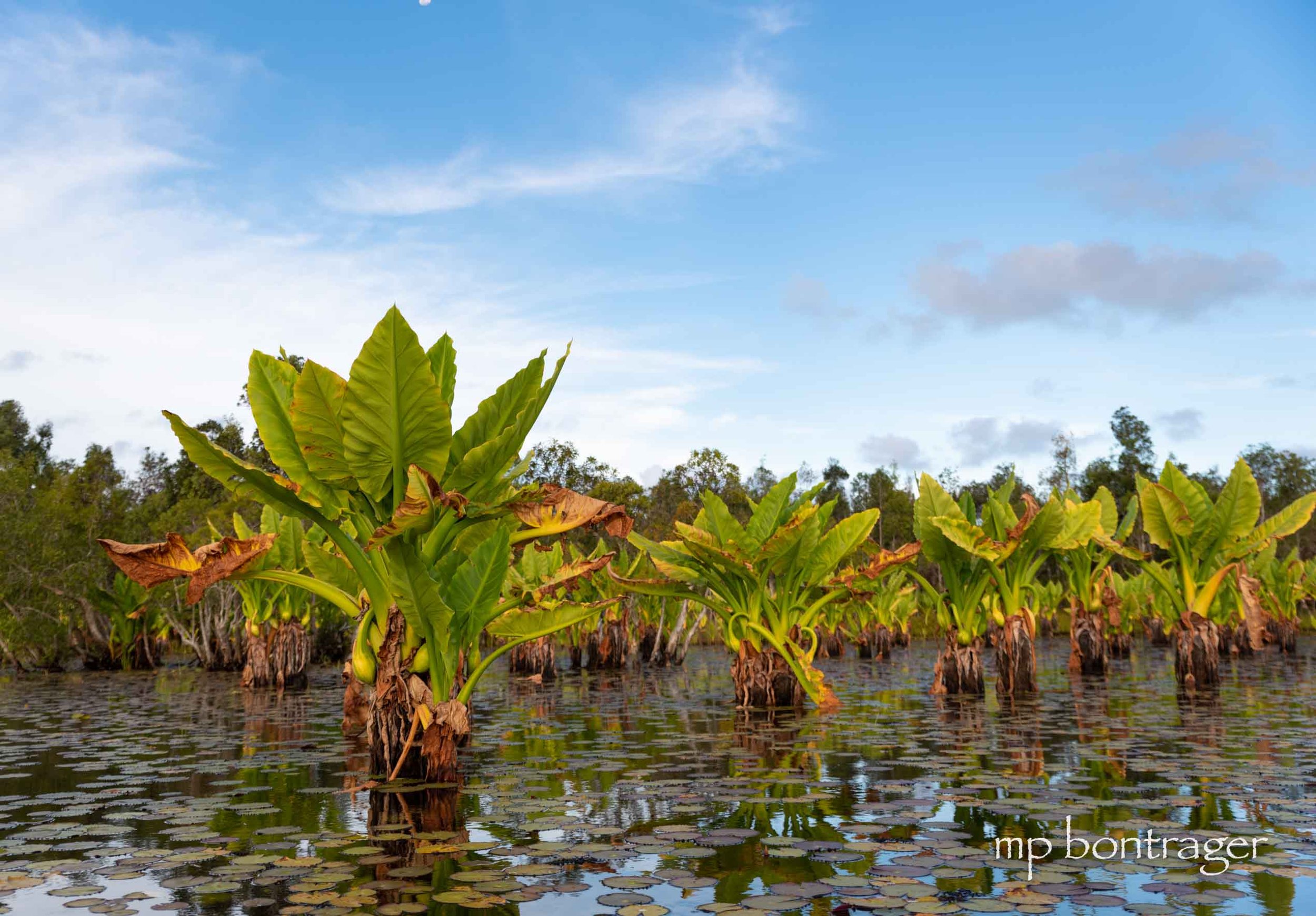During my brief visit I was moved by the beauty of Andasibe, the variety of wildlife and unusual botanicals was astounding.
Read MoreFather with young Indri Indri in the rainforest canopy

Father with young Indri Indri in the rainforest canopy
During my brief visit I was moved by the beauty of Andasibe, the variety of wildlife and unusual botanicals was astounding.
Read More…I asked to arrive to Analamazaotra N.P. promptly at 6 AM the next morning, so eager to see what the forest had to offer…
Read MoreI worked for a private language learning institute in Antsirabe, Madagascar for 9 months. It operates year-round, so I did not enjoy a 3-month winter holiday as most teachers do, but every once in-awhile I caught news that the institute would be closed for a short break. Without much notice, I would quickly have my friend and travel agent, S. Cocchiarella, organize a Madagascar adventure for me.
One such adventure was to Le Palmarium, a private reserve on Lake Ampitabe. Access to Le Palmarium is by boat through the Pangalanes Canal system, paralleling the Indian Ocean before entering Lake Ampitabe.
My private bungalow, situated on the lake shore, was absolutely private since most guests chose to stay in the forested part of the reserve where lemurs visit their tree-top rooms and balconies. Whether one chooses the sound of lapping waves on the lakeshore or a birds-eye view of lemurs, Le Palmarium is far removed from the hustle of Eastern Madagascar.
The lemurs are habituated to humans, they literally pose for photographs because they are accustomed to being fed my humans.
Many of the lemur species living here are not endemic to Eastern Madagascar.
The privately managed hotel and reserve maintains close relationships with the local villages. I spent a day walking with my guides to their homes, visiting their families, and learning a little bit about their lifestyle. Later that evening we canoed the shoreline, enjoying the lush landscape from a new angle.

Sunset from the canoe
Le Palmarium is a wonderful family getaway especially since it is fairly accessible from Antananarivo. Children are able to run, play, and swim while their parents watch with a refreshing beverage. I especially enjoyed my perfect breakfast overlooking the lake, escaping city-life for a few days.
Wild Madagascar arranged all of the details of my trip ensuring that I could pursue the activities that interested me.


Deforested hills outside Le Palmarium boundary
During my brief visit I was moved by the beauty of Andasibe, the variety of wildlife and unusual botanicals was astounding.
…I asked to arrive to Analamazaotra N.P. promptly at 6 AM the next morning, so eager to see what the forest had to offer…
Wild Madagascar Tour Operator arranged my travel plans to Le Palmarium

Sometimes I make plans well in advance. I consider every contingency and discuss options before finalizing the itinerary.
But I’ve changed and am able to accept surprise opportunities as they arise, because I’m comfortable with my judgement now. When a trip to central eastern Madagascar came together in a matter of a few weeks, I couldn’t believe my good fortune.

The Andasibe region of Madagascar has different types of protected areas creating a patchwork of wild spaces to be explored. The rock stars of the region are the Indri Indri lemurs. They are the largest lemurs of Madagascar and are found in certain rainforests of eastern Madagascar. Their vocalization is quite unique. Researchers have been recording and watching these lemurs for decades trying to piece together the evolution of song and communication.
A recent paper has confirmed that the Indri Indri have different vocalizations towards non-family members dependent if the other Indri Indri are local neighbors or strangers to their territory. These types of sophisticated social communication styles help Indri Indri warn of other lemurs, avoiding physical fighting. I think we can all agree that verbal discussion is the first step to solving disagreements.

mantadia national park
The owners of Wild Madagascar arranged for my driver and lodge stays throughout my holiday in the Central-Eastern rainforest area of Madagascar.
Here is a link to a recording https://wildlife.org/watch-lemurs-have-rhythm/I
During my brief visit I was moved by the beauty of Andasibe, the variety of wildlife and unusual botanicals was astounding.
…I asked to arrive to Analamazaotra N.P. promptly at 6 AM the next morning, so eager to see what the forest had to offer…
Forests can be replanted but the biodiversity of the old growth forests cannot be replaced. The authors of “Primary Forests are Irreplaceable for Sustaining Tropical Biodiversity“ Nature, (2011) successfully argue “…when it comes to maintaining tropical biodiversity, there is no substitute for primary forests.”